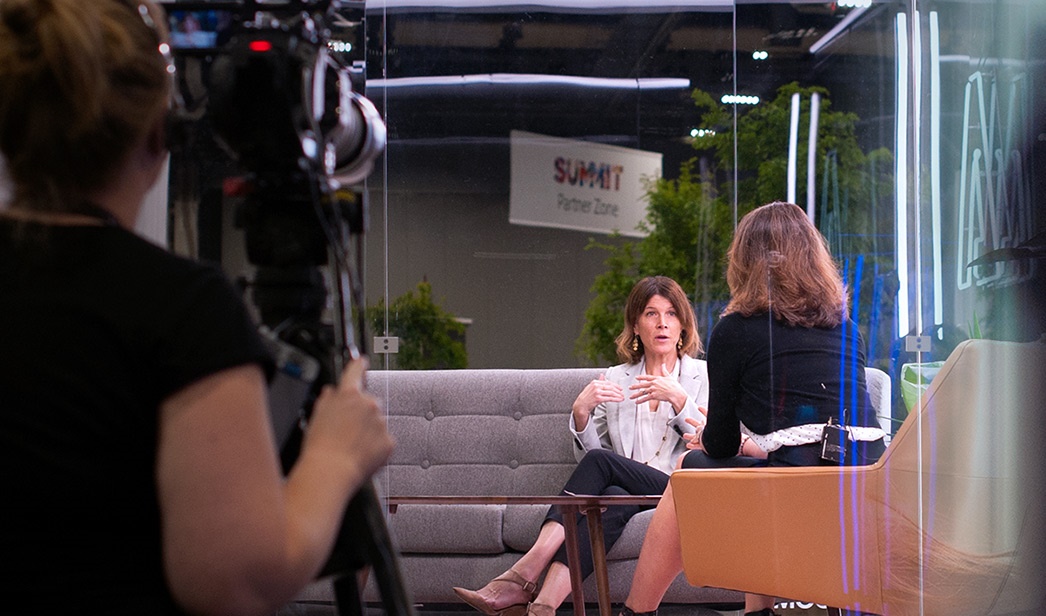Why Livestreaming Could Transform Your Brand
By Jim Bask
On 6 January 2016, a puddle formed in Newcastle. It was 1.5 metres wide and blocked a popular pedestrian route, making it difficult for pedestrians to get across. So far, so innocuous.
But when a local marketing agency pointed a camera at it and livestreamed people’s often comedic efforts to cross this harmless puddle, it attracted an audience of almost 20,000 viewers on Periscope and became an instant online sensation.

Livestreaming is nothing new, but in the UK this was a watershed moment (pun not intended). It was the start of a paradigm shift towards live, unscripted, unedited perspectives on the world. That desire for authenticity, which underlies so much of marketing today, is a key driver behind a phenomenon which now sees 63% of Millennials watching live content and nearly half (42%) having created it themselves
So what does this mean for marketers? And how can CMOs best use this new way of communicating with consumers?
The Marketing Value Of Livestreaming
If a picture is worth a thousand words, then one minute of video is worth 1.8 million words–at least according to research by Forrester. Video content is exponentially more powerful and more engaging than written content when it comes to marketing value. Our brains process video 60,000 times faster than text, making the content more inviting and easier to engage with.
Livestreaming takes this one step further, offering an experience that immerses you more deeply. Viewers feel more involved because they are sharing an experience that is happening right now, almost as if they are in the same room. And the absence of post-production editing gives the content a rawness that feels more real and more substantive.
And it’s not just in the livestream itself that you see the benefits. Live video lives beyond the moment when it is broadcast, with highlights and clips from the stream frequently shared on social media. The social viewing experience is not just limited to those who saw the stream live – it can easily spark a conversation that reaches wider and deeper into consumer culture, much as the famous puddle continued to make waves long after it had cleared.
It’s no surprise then that the likes of Facebook, Instagram, Snapchat, Twitter, Periscope, Twitch, and YouTube have stepped into the space.
With so many big platforms investing in this mode of storytelling and a market developing around it that is predicted to be worth $70 billion by 2021, there are clearly many opportunities for marketers to make use of the richer and deeper connections that livestreaming can offer.
Transforming Brand Storytelling
For brands, this is a chance to tell a story that feels different from the usual corporate speak that consumers are now mostly accustomed to.
It’s not easy. As marketers, we’re used to being able to control, cultivate and curate content in line with research and the brand’s strategy. Relinquishing some of that control comes with risks.
An unscripted live experience can easily go embarrassingly wrong, adding your brand to the hundreds of “livestream fails” that are forever archived on the Internet.
That’s not to mention the problem of anonymous commentators being able to satirise everything you say and do so in real time on platforms like Facebook Live and Twitch, which are notorious for their acerbic and often offensive comments.
And then there’s the issue of what content you stream in the first place. If you go on Twitch passively streaming a conventional ad, you can expect to be ignored or worse, ruthlessly mocked.
Let The Audience Lean In
To succeed at livestreaming, you have to create something that allows your audience to lean in and be part of the story.
Your viewers can shape the direction of the narrative, whether you like it or not. They won’t passively consume, nor will they share without adding their own opinion.
Embracing that and inviting your audience into a more meaningful connection is the best approach. Being open and honest about your intentions and your values, while listening to your audience’s feedback, is absolutely essential for truly engaging with them. Only brands that can adopt this way of thinking will reap the rewards of this boom.
Part of this honesty also means accepting when livestreaming isn’t appropriate for you. For all the benefits that livestreaming offers, it is not a silver bullet for authentic communication and it will never replace other channels. In a world where consumers can easily spot chinks in a brand’s armour, live video can be a very potent way of delivering transparency and authenticity. In short, it will always be useful tool, but it is not the entire toolkit.
A More Meaningful Conversation
Livestreaming can help you spark a more meaningful conversation with your audience. And the potential size of that audience is only going to be limited by the size of your ambition and the capabilities of your brand.
Approached in the right way, livestreaming can transform people’s perceptions of your brand. When an anonymous puddle in the middle of Newcastle can become a star you can see how powerful this medium can be.

